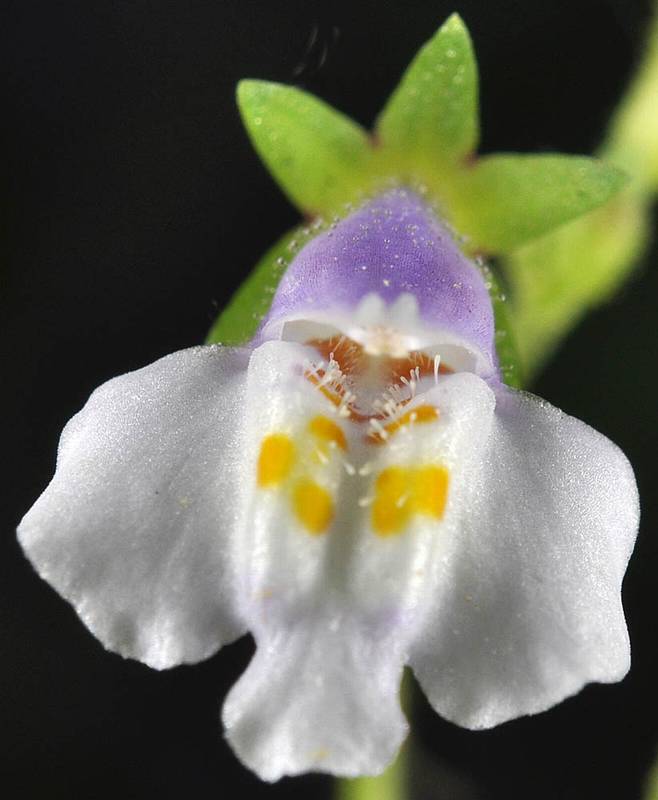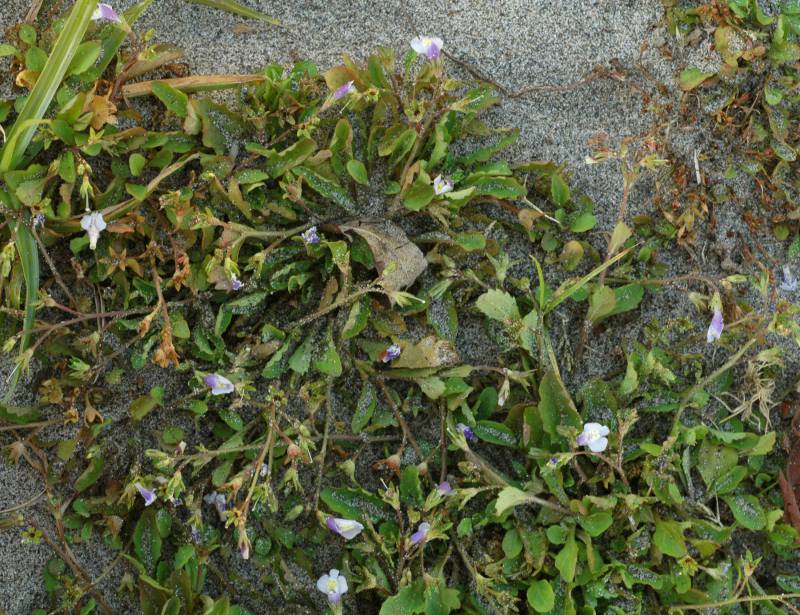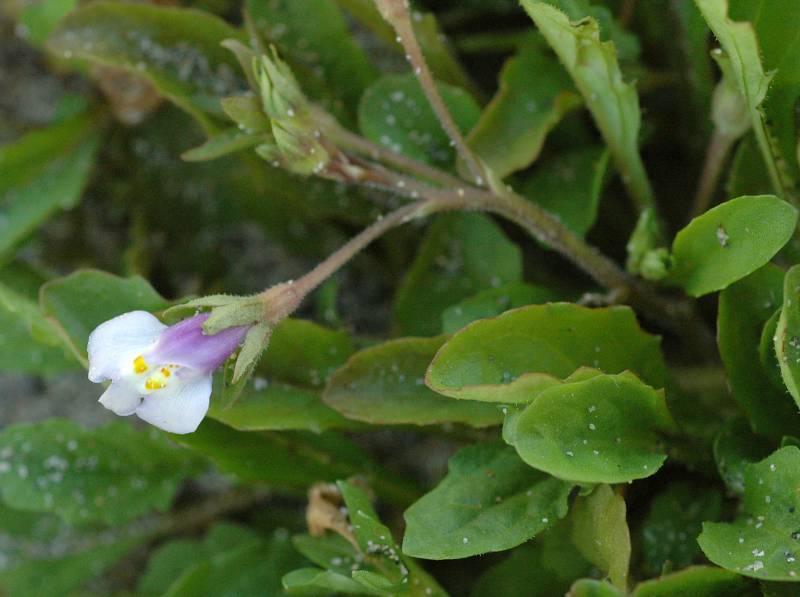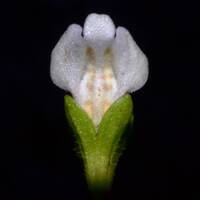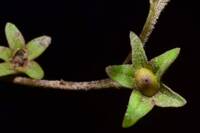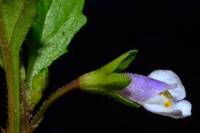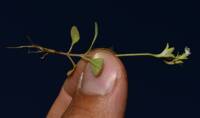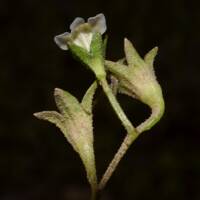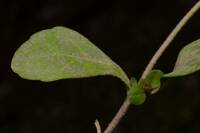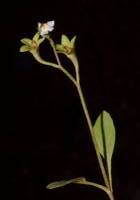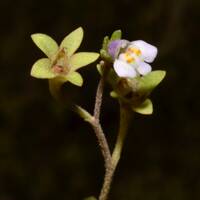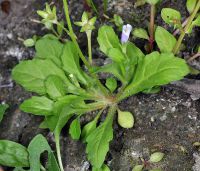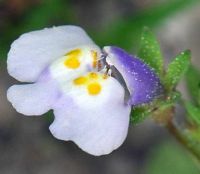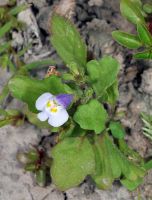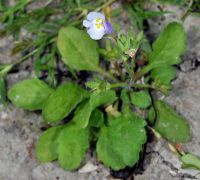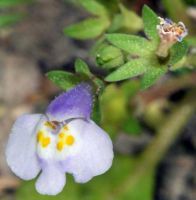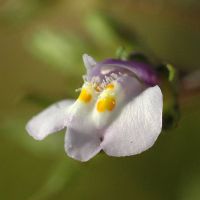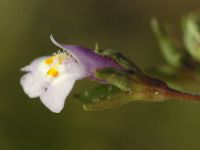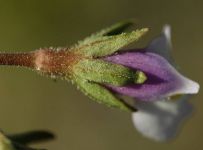Distribution: Occurring east of the Cascades crest and in the Columbia River Gorge in Washington; southern Washington to adjacent northern Oregon along the Columbia River; also in the southeastern U.S.
Habitat: Moist, sandy or silty riverbanks, and lawns.
Flowers: May-November
Origin: Introduced from Asia
Growth Duration: Annual
Conservation Status: Not of concern
Annual, branched from the base, the stem up to 15 cm. tall and covered with spreading hairs.
Basal leaves rounded above and narrowed toward the base, up to 4 cm long and 15 mm. wide, irregularly toothed; cauline leaves similar but smaller, opposite.
Inflorescence a naked raceme that is longer than the proper stem, openly 4-10 flowered; calyx 5-cleft to the middle, 4-5 mm. long; corolla bilabiate, 7-10 mm. long, blue-violet, marked with yellow and white, the upper lip short and 2-toothed, the lower lip much larger, 3-lobed; stamens 4, one pair longer; stigmas 2, flattened.
Capsule.
Publication: Nova Guinea ser. 2, 9: 31. 1951.
PNW Herbaria: Specimen records of Mazus pumilus in the Consortium of Pacific Northwest Herbaria database
WA Flora Checklist: Mazus pumilus checklist entry
OregonFlora: Mazus pumilus information
E-Flora BC: Mazus pumilus atlas page
CalPhotos: Mazus pumilus photos

